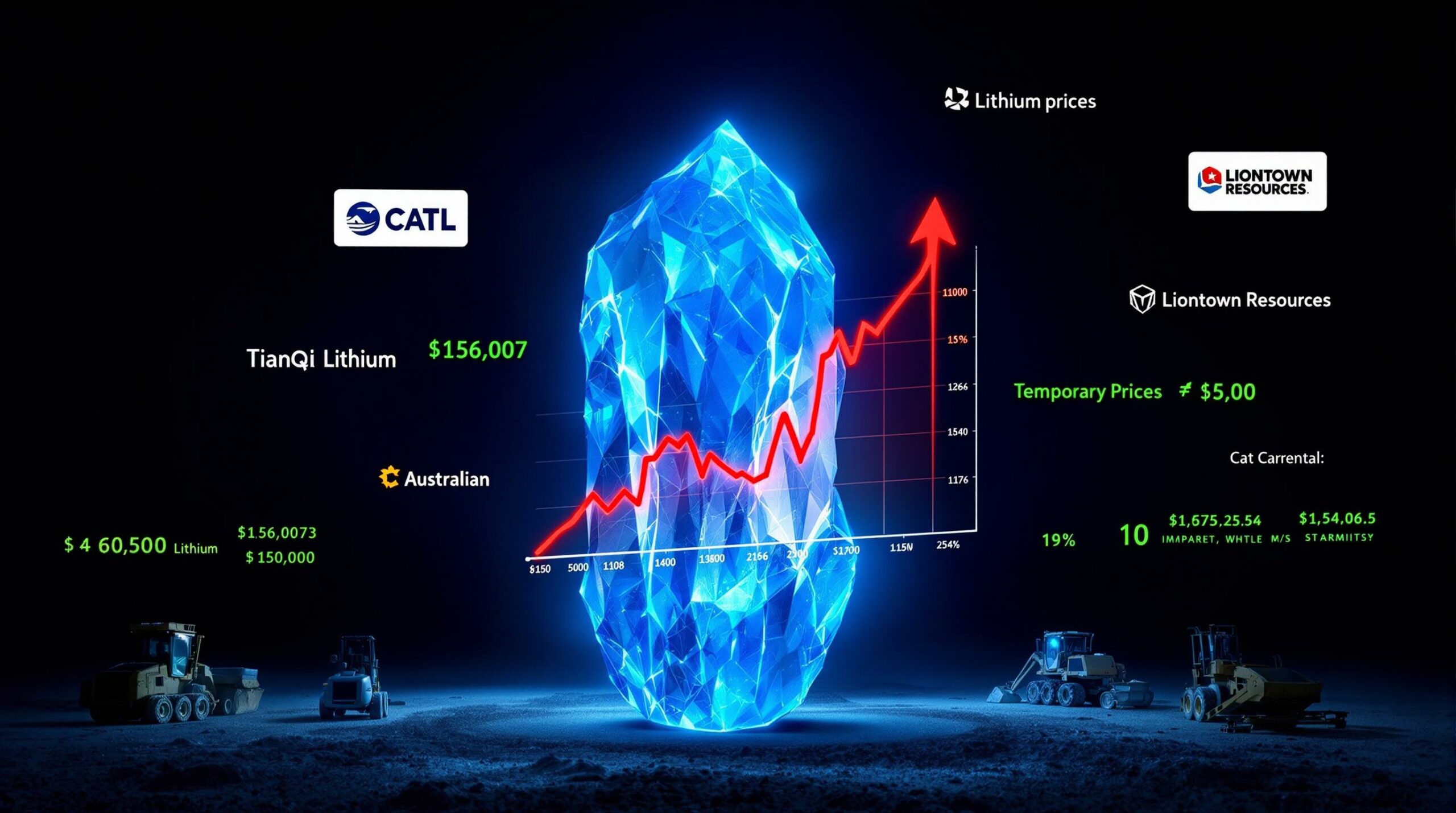Understanding Cobalt Feedstock Testing for EV Batteries
Cobalt, a crucial component in lithium-ion batteries, sits at the center of the electric vehicle revolution. As automakers race to secure reliable supply chains, understanding how cobalt feedstock tests for EV batteries has become increasingly important for manufacturers, investors, and consumers alike. This article explores the intricate world of cobalt feedstock testing and its far-reaching implications for the EV industry.
The Critical Role of Cobalt in Battery Manufacturing
Cobalt serves as an essential material in lithium-ion battery cathodes, playing a vital role in stabilizing the battery structure during charge and discharge cycles. Without cobalt, batteries would face significantly reduced lifespans and potentially dangerous thermal instability issues.
Key functions of cobalt in EV batteries include:
- Enhancing energy density, allowing EVs to travel further on a single charge
- Improving thermal stability and safety during rapid charging and discharging
- Extending battery life through improved cycling performance
- Enabling faster charging capabilities in premium battery designs
North America currently faces significant dependency on foreign cobalt processing, with China dominating the refining landscape. This dependency creates vulnerability in supply chains, particularly as EV production scales rapidly across the continent.
Complex Challenges in Cobalt Processing
The technical complexities in processing cobalt-bearing minerals represent a major hurdle for North American manufacturers. According to George Puvvada, VP of Metallurgy and Technology at a major battery materials company, "North American concentrates often contain elevated levels of arsenic and other impurities, which have made them difficult to process using conventional methods."
These challenges include:
- Managing arsenic contamination, which can affect battery performance and pose environmental risks
- Addressing complex sulfide mineralogy that resists traditional processing techniques
- Overcoming compatibility issues with conventional smelting and refining methods
- Meeting stringent battery-grade purity requirements of 99.8% or higher
Industry Insight: Cobalt deposits in North America typically contain 0.1-0.3% cobalt compared to some African deposits that may contain 1-3%, requiring more sophisticated extraction techniques to be economically viable.
How Are Companies Developing North American Cobalt Supply Chains?
The push to establish robust domestic cobalt supply chains has accelerated in recent years, driven by both national security concerns and the explosive growth of EV manufacturing across North America.
Innovative Approaches to Cobalt Feedstock Testing
Several companies are pioneering innovative approaches to cobalt processing in North America. One significant development involves metallurgical testing on cobalt feedstocks from Ontario's Cobalt Camp and Iron Creek, Idaho project, announced on July 31, 2024.
This testing program employs hydrometallurgical processing methods, which offer several advantages over conventional approaches:
- Enhanced Processing Flexibility: Ability to handle complex mineralogy specific to North American deposits
- Improved Impurity Management: Better arsenic and sulfide management capabilities
- Environmental Advantages: Potentially lower emissions and waste production
- Integration Potential: Compatibility with battery metals investment initiatives
According to industry experts, "Many North American cobalt-bearing mineral resources have remained undeveloped due to mineralogy that is incompatible with conventional smelting and refining. Our hydrometallurgical process offers a potential domestic solution to that challenge, aligned with the battery market and geopolitical imperatives."
Strategic Partnerships Driving Development
The formation of strategic partnerships has been crucial in developing viable cobalt supply chains. These collaborations bring together mining operations, processing technology, and end-users to create integrated supply networks.
Key partnership examples include:
- Long-term offtake agreements between refiners and battery manufacturers
- 5-year supply agreements covering up to 80% of production output
- Technical collaborations between processing companies and mining operations
- Public-private partnerships supported by government initiatives
Industry analysts note that these partnerships not only secure material flow but also provide the financial stability needed for long-term infrastructure investment. Companies are also exploring opportunities presented by the Cobalt Blue expansion to further enhance supply chain resilience.
What Testing Methods Are Used for Cobalt Feedstock Evaluation?
Rigorous testing protocols are essential to determine whether cobalt materials meet the exacting standards required for EV battery production.
Metallurgical Testing Protocols
The metallurgical evaluation of cobalt-bearing materials follows a structured approach designed to assess both processability and final product quality:
| Testing Phase | Key Procedures | Critical Parameters |
|---|---|---|
| Sample Preparation | Crushing, grinding, homogenization | Particle size distribution, moisture content |
| Characterization | XRD, SEM-EDS, chemical assays | Mineral composition, crystal structure, impurity profile |
| Leaching Studies | Acid leaching, selective dissolution | Recovery efficiency, reaction kinetics, reagent consumption |
| Impurity Removal | Precipitation, solvent extraction, ion exchange | Separation factors, impurity rejection rates |
| Product Recovery | Crystallization, electrowinning | Product purity, morphology, particle size |
| Scale-up Assessment | Bench to pilot testing | Process robustness, equipment sizing, operational parameters |
"The cobalt feedstock tests will provide a clearer picture of how North American cobalt-bearing concentrates can be processed using hydrometallurgical technology," explains a metallurgy expert involved in the testing program.
Quality Assessment Parameters
For cobalt to be suitable for EV battery applications, it must meet stringent quality specifications that include:
- Purity Requirements: Typically 99.8% minimum cobalt content
- Trace Element Limits: Strict thresholds for nickel (<500 ppm), iron (<200 ppm), copper (<300 ppm), and other metals
- Harmful Elements: Near-zero tolerance for arsenic, cadmium, and lead
- Physical Properties: Specific surface area, particle size distribution, and morphology
- Electrochemical Performance: Capacity retention, cycling stability, and rate capability
Testing typically includes multi-stage quality verification with both in-process and final product assessments to ensure consistent quality across production batches.
How Does Cobalt Feedstock Testing Impact EV Battery Production?
The development of advanced cobalt feedstock testing and processing capabilities has profound implications for the EV battery manufacturing landscape.
Supply Chain Security Benefits
By establishing domestic testing and processing capabilities, North American manufacturers can achieve:
- Reduced Foreign Dependency: Decreased reliance on overseas processing facilities, particularly in geopolitically sensitive regions
- Supply Diversification: Access to previously unviable North American cobalt sources
- Shortage Mitigation: As noted in Electra Battery Materials' testing announcement, "A more secure supply of critical battery materials can, in turn, help mitigate potential shortages of lithium-ion batteries."
- Operational Resilience: Protection against supply disruptions due to trade disputes or logistics challenges
This enhanced security translates directly to manufacturing stability, allowing automakers to maintain production schedules with greater confidence.
Technical Advantages of Advanced Processing
The technical innovations emerging from cobalt feedstock testing programs offer several advantages:
- Resource Expansion: Ability to process previously unviable cobalt resources, effectively expanding the North American resource base
- Recovery Optimization: Improved recovery rates from complex ores, increasing economic viability
- Processing Versatility: Capability to handle varying feed compositions, creating operational flexibility
- Recycling Integration: Complementary processing capabilities with battery recycling initiatives
Industry experts believe these advancements "can significantly expand the range of materials refineries can process," creating new opportunities for domestic supply chain development.
What Are the Environmental Considerations in Cobalt Feedstock Testing?
Environmental factors play an increasingly central role in cobalt processing development, with sustainability considerations driving innovation.
Sustainable Processing Development
Hydrometallurgical processing methods being tested for North American cobalt resources offer several environmental advantages:
- Lower Energy Consumption: Typically 30-40% less energy-intensive than conventional pyrometallurgical methods
- Reduced Emissions: Lower greenhouse gas emissions compared to high-temperature smelting
- Improved Waste Management: Better control over arsenic and other contaminants through targeted precipitation and stabilization
- Water Management: Closed-loop water systems that minimize consumption and prevent discharge
The development of specialized processes for arsenic management is particularly important, as this element presents both technical and environmental challenges. Furthermore, sustainable mining transformation practices are becoming increasingly integrated into cobalt processing operations.
Environmental Perspective: Hydrometallurgical processes typically operate at temperatures below 100°C, compared to pyrometallurgical methods requiring 1200-1500°C, resulting in significantly lower energy requirements and associated carbon emissions.
Regulatory Compliance and ESG Factors
North American cobalt processing operations must navigate complex regulatory landscapes while meeting increasing ESG (Environmental, Social, and Governance) expectations:
- Stringent Environmental Standards: Meeting EPA and provincial regulations for air, water, and waste management
- Responsible Sourcing: Implementing supply chain transparency and verification mechanisms
- Carbon Footprint Considerations: Evaluating emissions across the entire value chain, from mining to processing
- Community Engagement: Developing social license to operate through local partnerships and economic development
Companies leading cobalt testing initiatives emphasize their commitment to "responsibly recover critical metals from North American feeds," recognizing that environmental performance is essential for market acceptance.
What Economic Implications Does Cobalt Feedstock Testing Have?
The economic implications of advanced cobalt feedstock testing extend beyond immediate supply chain benefits to reshape market dynamics and create new business opportunities.
Market Impact of Expanded North American Processing
The development of domestic cobalt processing capabilities could significantly impact market structures:
- Price Stabilization: Reduced dependency on volatile international markets
- Processing Cost Optimization: Potential for 15-20% cost reductions through specialized processing of North American materials
- Investment Attraction: Estimated $2-3 billion in capital deployment for processing infrastructure over the next decade
- Value Chain Expansion: Creation of new economic activity in refining and precursor production
Industry analysis suggests that successful domestic processing could achieve cost parity with international sources within 3-5 years of commercial deployment, particularly when factoring in reduced logistics costs and supply security premiums. These developments will likely influence global cobalt production trends in the coming years.
Value Chain Integration Opportunities
Cobalt feedstock testing creates possibilities for vertical integration and value chain optimization:
- Upstream Integration: Battery manufacturers securing direct access to processed materials
- Co-product Recovery: Extracting valuable copper, nickel, and other metals from the same feedstocks
- Technology Licensing: Commercializing innovative processing technologies for broader application
- Strategic Partnerships: Developing long-term agreements that link mining, processing, and manufacturing
The five-year supply agreements already established, covering up to 80% of production output, demonstrate the commercial viability of these integration strategies.
FAQ: Cobalt Feedstock Testing for EV Batteries
What makes North American cobalt resources challenging to process?
North American cobalt resources present unique challenges due to:
- Complex Mineralogy: Occurrence primarily in arsenide and sulfarsenide minerals rather than simple oxides
- Arsenic Content: Concentrations often exceeding 1%, well above traditional processing tolerance limits
- Polymetallic Nature: Co-occurrence with copper, nickel, silver, and other metals requiring selective extraction
- Historical Underinvestment: Limited development of specialized processing technologies for these specific deposits
These factors have historically redirected investment toward simpler deposits in other regions, creating a technology gap that current testing programs aim to address.
How does hydrometallurgical processing differ from conventional methods?
Hydrometallurgical processing offers several distinctions from conventional pyrometallurgical approaches:
| Aspect | Hydrometallurgical | Pyrometallurgical |
|---|---|---|
| Operating Temperature | 80-100°C | 1200-1500°C |
| Primary Mechanism | Chemical dissolution | High-temperature melting |
| Energy Requirements | Lower | Higher |
| Selectivity | Higher (chemical specificity) | Lower (bulk processing) |
| Impurity Management | Selective precipitation | Slag formation |
| Scale Flexibility | Modular, scalable | Economies of scale critical |
| Capital Intensity | Moderate | High |
| Environmental Profile | Generally lower emissions | Higher emissions |
This comparison illustrates why hydrometallurgical approaches show promise for processing complex North American cobalt resources that conventional methods struggle to handle efficiently.
What role does cobalt feedstock testing play in battery recycling initiatives?
Cobalt feedstock testing creates synergies with battery recycling through:
- Process Compatibility: Similar hydrometallurgical techniques apply to both virgin and recycled materials
- Equipment Utilization: Processing facilities can potentially handle both feedstock types with minor modifications
- Impurity Management: Experience with complex primary materials translates to managing recycling contaminants
- Economic Enhancement: Combined operations improve overall economics through shared infrastructure
Building on successful black mass recycling test programs, experts believe these synergies can "significantly expand the range of materials refineries can process," creating a more circular materials economy.
How might successful cobalt feedstock testing impact EV manufacturing costs?
Successful testing and implementation of advanced cobalt processing could impact EV costs through:
- Supply Security Premium Reduction: Less volatility-related pricing and reduced inventory carrying costs
- Processing Efficiency Gains: Estimated 10-15% improvement in material yields through optimized processes
- Logistics Savings: Reduced transportation costs from shortened supply chains
- Scale Economics: Cost amortization across larger production volumes as processes mature
While these benefits may not immediately reduce battery costs, they could stabilize pricing and mitigate future increases, providing manufacturers with better cost predictability for long-term planning.
Industry Perspective: The true value of domestic cobalt processing may be measured not just in direct cost savings but in supply security, which enables manufacturing planning confidence and consistent production schedules.
What's Next for Cobalt Feedstock Testing?
As cobalt feedstock tests for EV batteries programs advance, several industry innovation trends are likely to shape the landscape:
- Commercial Scale Demonstration: Moving from laboratory to pilot and commercial-scale operations
- Process Optimization: Refining techniques to improve recovery rates and reduce operating costs
- Technology Transfer: Applying successful approaches to additional North American resources
- Integration Enhancement: Creating seamless connections between mining, processing, and manufacturing
- Regulatory Framework Development: Establishing standards and certifications for domestically processed materials
The next 24-36 months will be critical in determining whether these testing programs can successfully translate into commercial-scale operations that meaningfully impact North American EV battery supply chains.
Disclaimer
This article contains forward-looking statements and projections regarding the development of cobalt processing technologies and their potential impact on EV battery production. These statements involve numerous assumptions and uncertainties. Actual results may differ materially from those anticipated. Readers should not make investment decisions based solely on the information presented.
Want to Invest in the Next Major Mineral Discovery?
Stay ahead of the market with real-time alerts on significant ASX mineral discoveries, powered by Discovery Alert's proprietary Discovery IQ model. Explore why historic discoveries can generate substantial returns by visiting the Discovery Alert's discoveries page and begin your 30-day free trial today.




